Study skills for lifelong learning
The progression of study skills in Stile X from Year 7 to Year 10
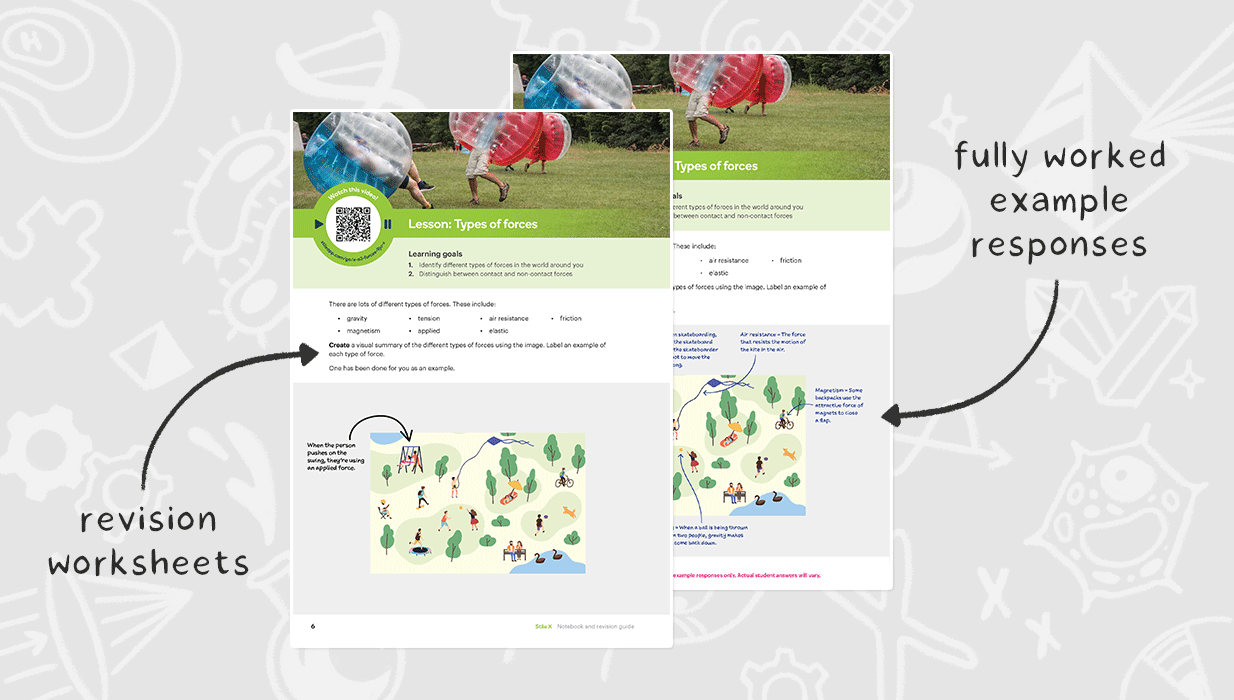
By Jacky Rooney, Head of Special Projects at Stile Education
Note-taking and studying are invaluable, lifelong and transferable skills that research shows are a strong predictor of student achievement. But, knowing how to study or take effective notes is something we often expect our students to already know or pick up as they move through school. Research demonstrates that these skills need to be explicitly taught and scaffolded, but how do we find the time in our ever-busy classrooms and an increasingly crowded curriculum?
That’s where Stile's revision and mastery resources come in.
Stile's revision materials provide students with explicit instruction, scaffolding, support, and tools to develop these critical skills. Using a ‘gradual release of responsibility’ model, students are gradually introduced to note-taking and study strategies that become increasingly complex as they move from Year 7 to Year 10. By building a strong foundation in Years 7-10, your students will have a toolkit full of strategies to help them succeed in senior science and beyond.
By building a strong foundation in Years 7-10, your students will have a toolkit full of strategies to help them succeed in senior science and beyond.
Study skills
Study skills encompass various tactics and strategies that allow students to effectively learn, organise and recall new information. We like to think of it as teaching students how to work smarter, not harder.
Developing these skills can:
- help students use their study time more effectively
- improve performance on tests and exams
- prepare students for success in their senior years of schooling
Study skills are embedded throughout Stile's digital revision worksheets and Stile X booklets in the form of Expert study tips. These tips teach students revision skills, attitudes and mindsets to help them become lifelong learners. We’ve called them expert study tips because they’re all backed by cognitive research. Read our Science of Stile's Revision Resources blog series here.
The tips cover a range of revision techniques, including planning for study, memorisation, self-regulation and focus techniques, time management, exam and test strategies, mindfulness, mindset and motivation development.
Do, Plan and Reflect
The Expert study tips in Stile's revision resources resources are divided into three categories of increasing complexity: Do, Plan and Reflect.
- 'Do' study tips are the most simple tips that students can implement straight away.
- 'Plan' study tips require students to think ahead to make the most of future study sessions.
- 'Reflect' study tips ask students to actively engage in metacognition and reflect on their mindsets, attitudes and practices towards study.
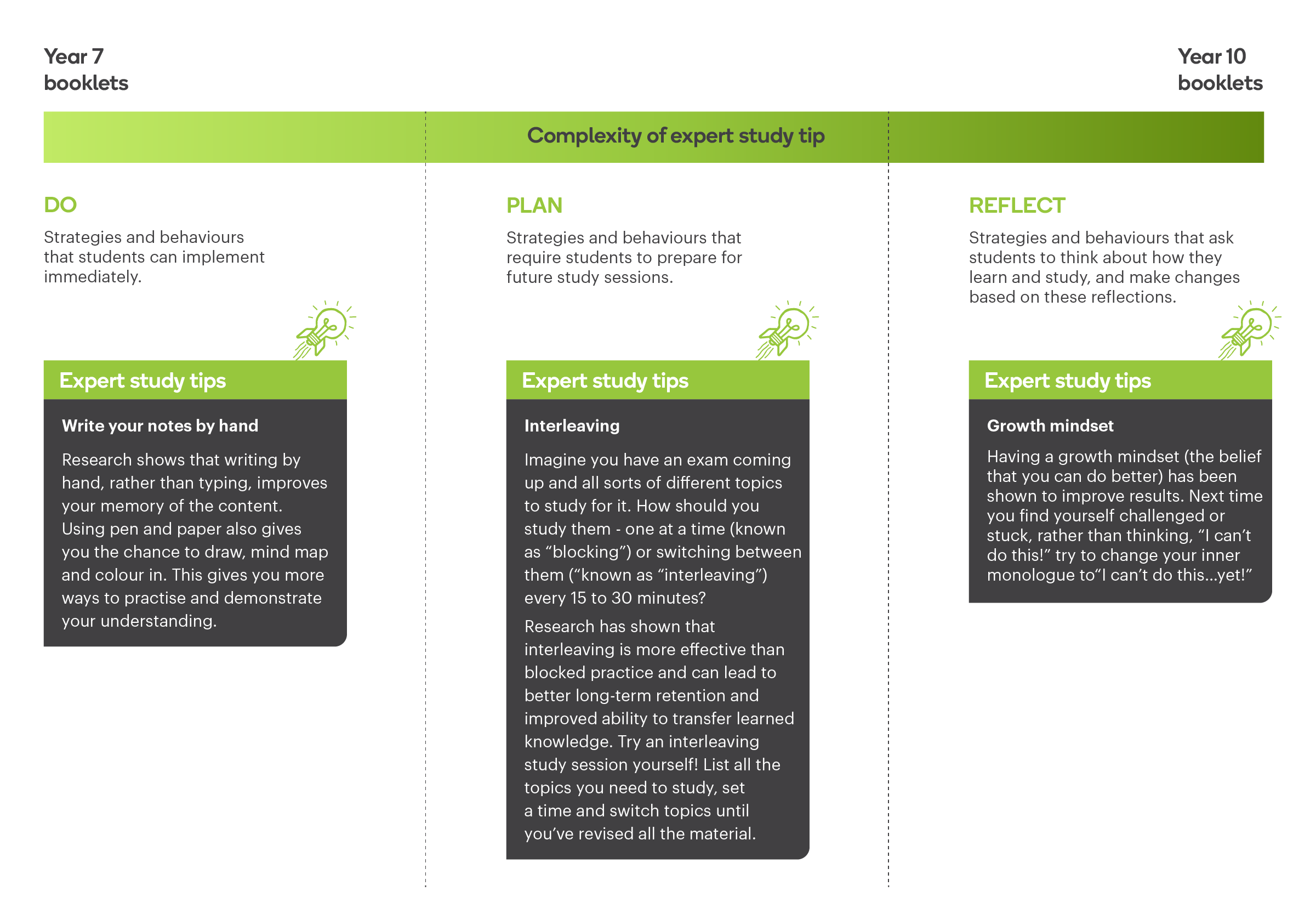
As students progress from Year 7 to 10, they complete more complex Plan and Reflect study tips, and fewer Do study tips.
Note-taking
Note-taking encourages students to summarise concepts in their own words.
Good note-taking:
- encourages deep learning of the content
- provides a hard-copy reference and summary of key information that can be referred back to when preparing or studying for a test
Note-taking methods
Using Stile's revision resources in Years 7 - 10 should enable students to enter Years 11 and 12 with a full set of study skills. By the end of Year 10, students should know how to take notes independently. Over Years 7-10, the scaffolding is gradually removed to ensure students can do this. The note-taking milestones for each year level are:
- By the end of Year 7, students can use a scaffolded version of the outline note-taking method to revise.
- By the end of Year 8, students can use either the outline or two-column note-taking method to revise.
- By the end of Year 9, students can use the Cornell method to revise, with some scaffolding.
- By the end of Year 10, students can use the Cornell method unscaffolded. We provide a checklist to ensure all content is covered.
With explicit instruction on how to use these note-taking methods and repeated exposure in every unit, students have multiple opportunities to learn and master these different strategies.
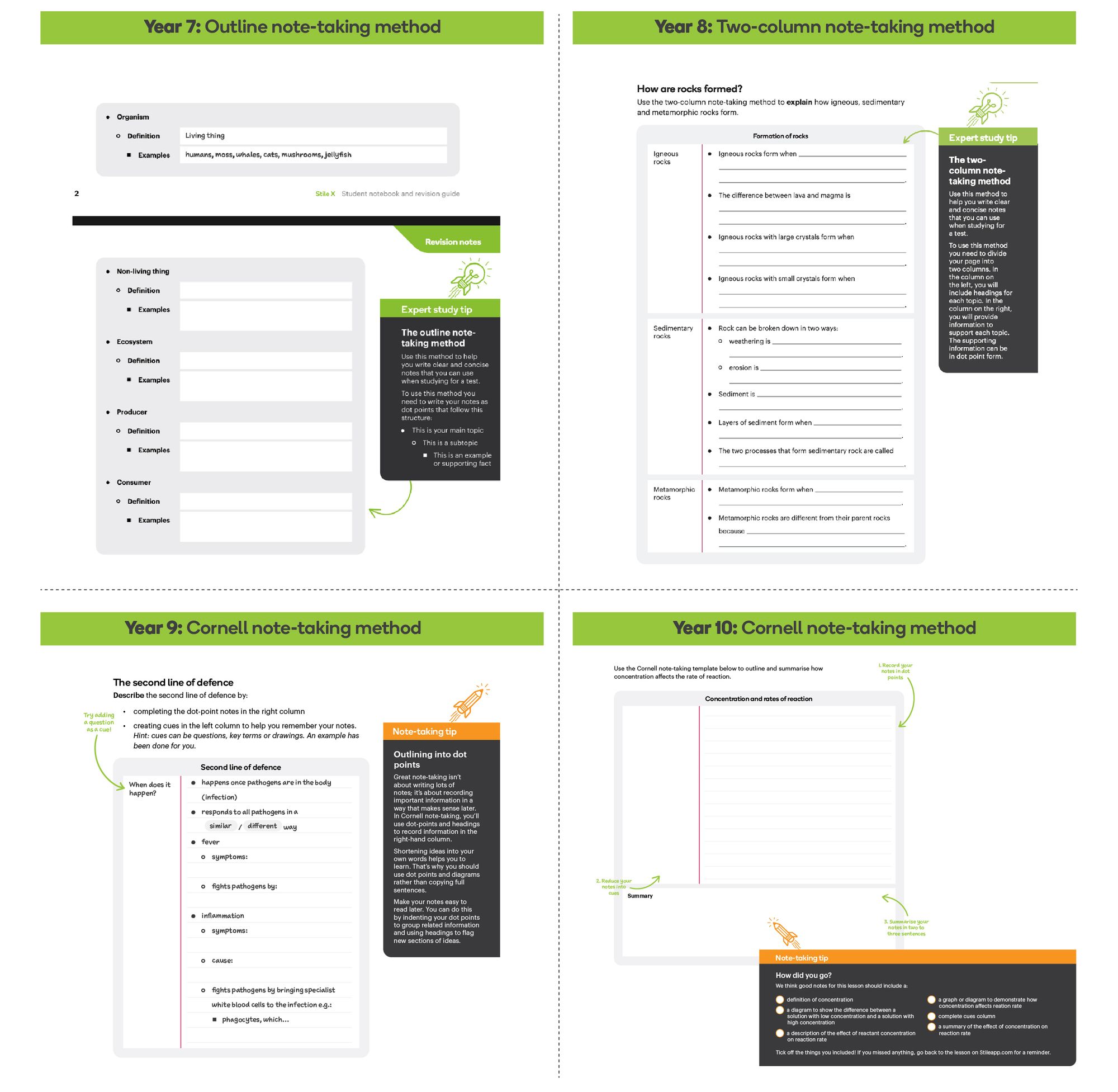
Cornell notes
In particular, the Year 9 and 10 revision resources place a greater focus on note-taking skills to help ensure students are set for success in senior science. Students are explicitly taught each of the skills required to take Cornell notes in isolation throughout each chapter:
- Dot-point note-taking
- Creating personalised cues
- Summarising
- Reciting (like look-say-cover-write-check) using the cues to jog their memory
They then put these skills together in a full Cornell note-taking extravaganza in one of the last lessons.
Revision notes
Scaffolding and explicit instruction in the Revision notes section the revision worksheets support students in creating their own summary notes. Each lesson covered by these revision resources uses a range of different revision strategies such as:
Cloze activities
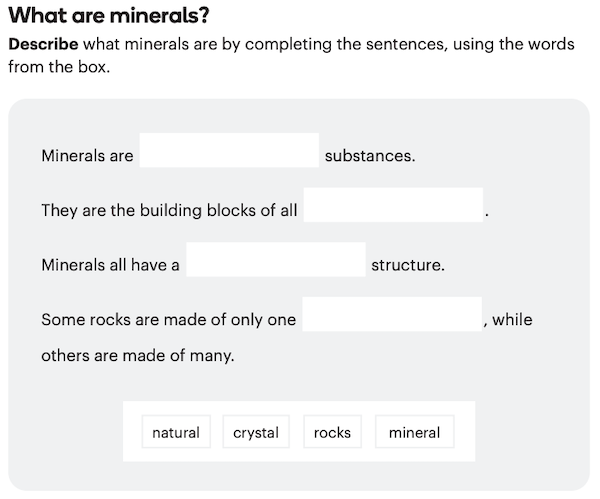
Annotating
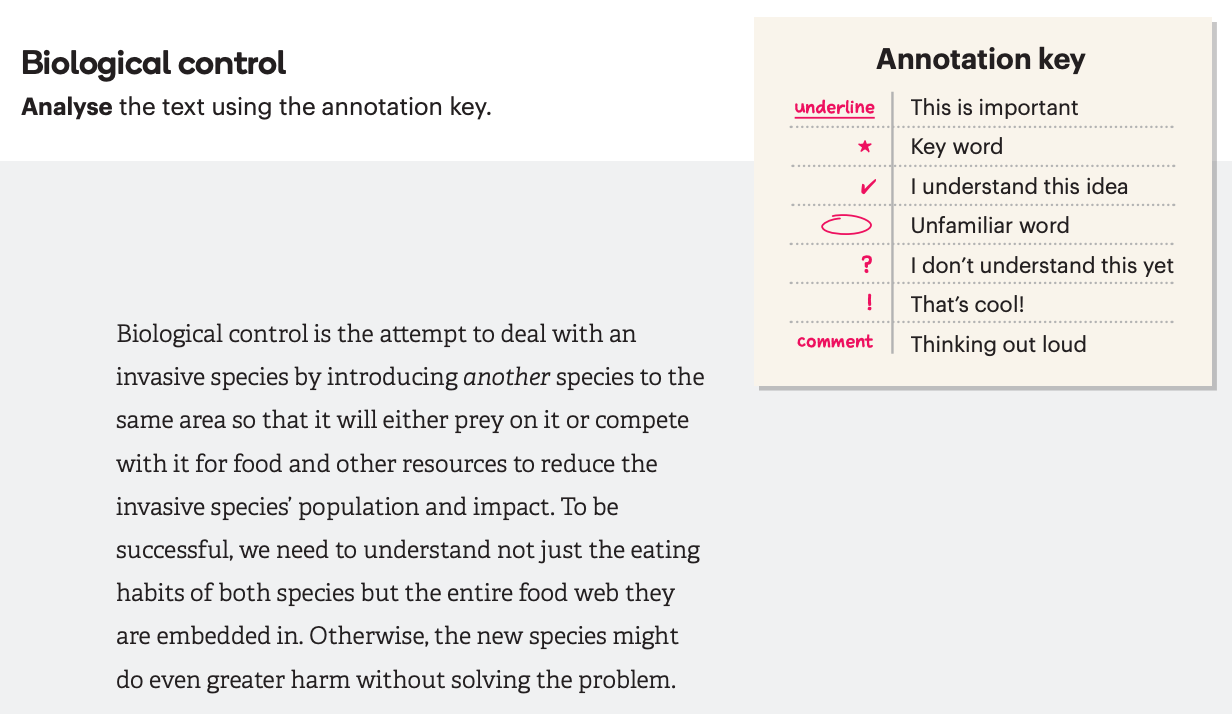
Highlighting
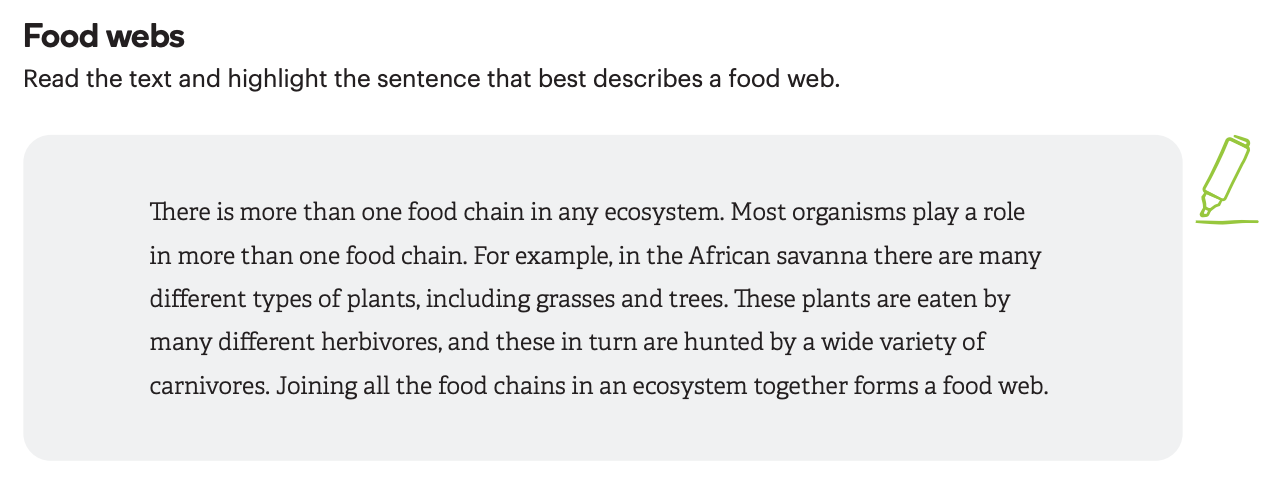
Graphic organisers
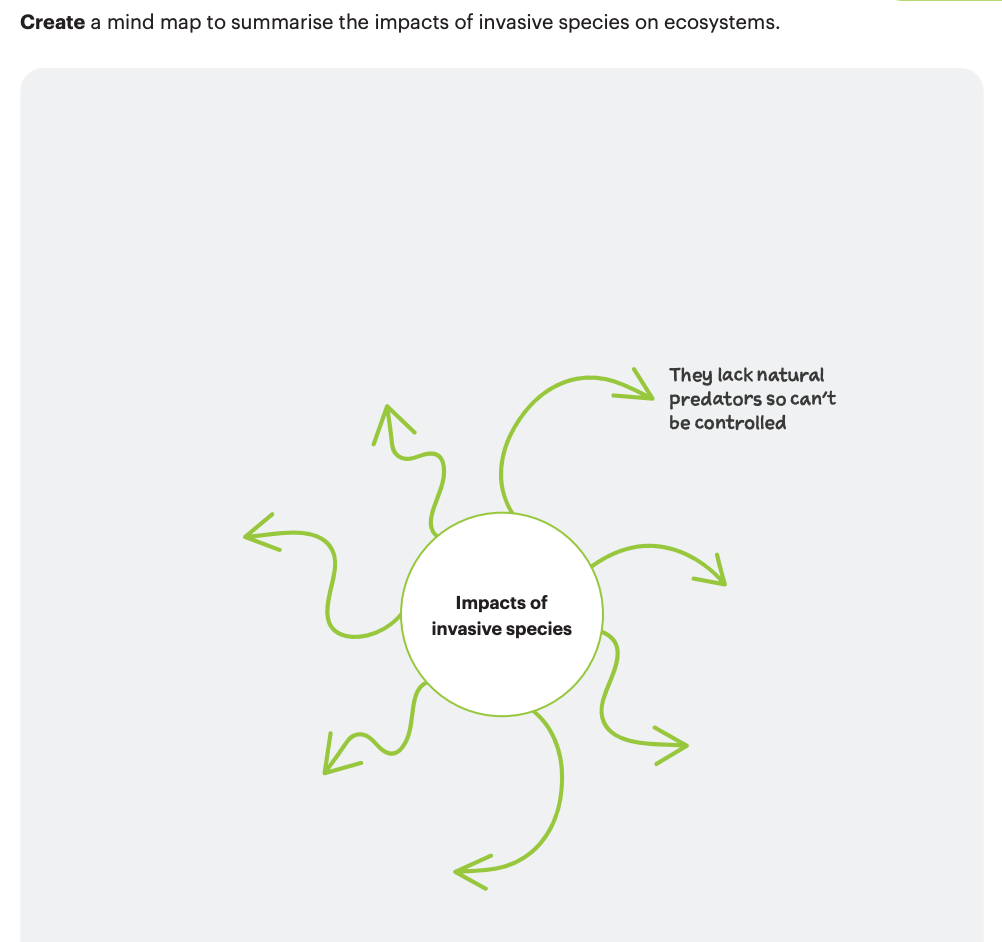
Drawing or labelling diagrams
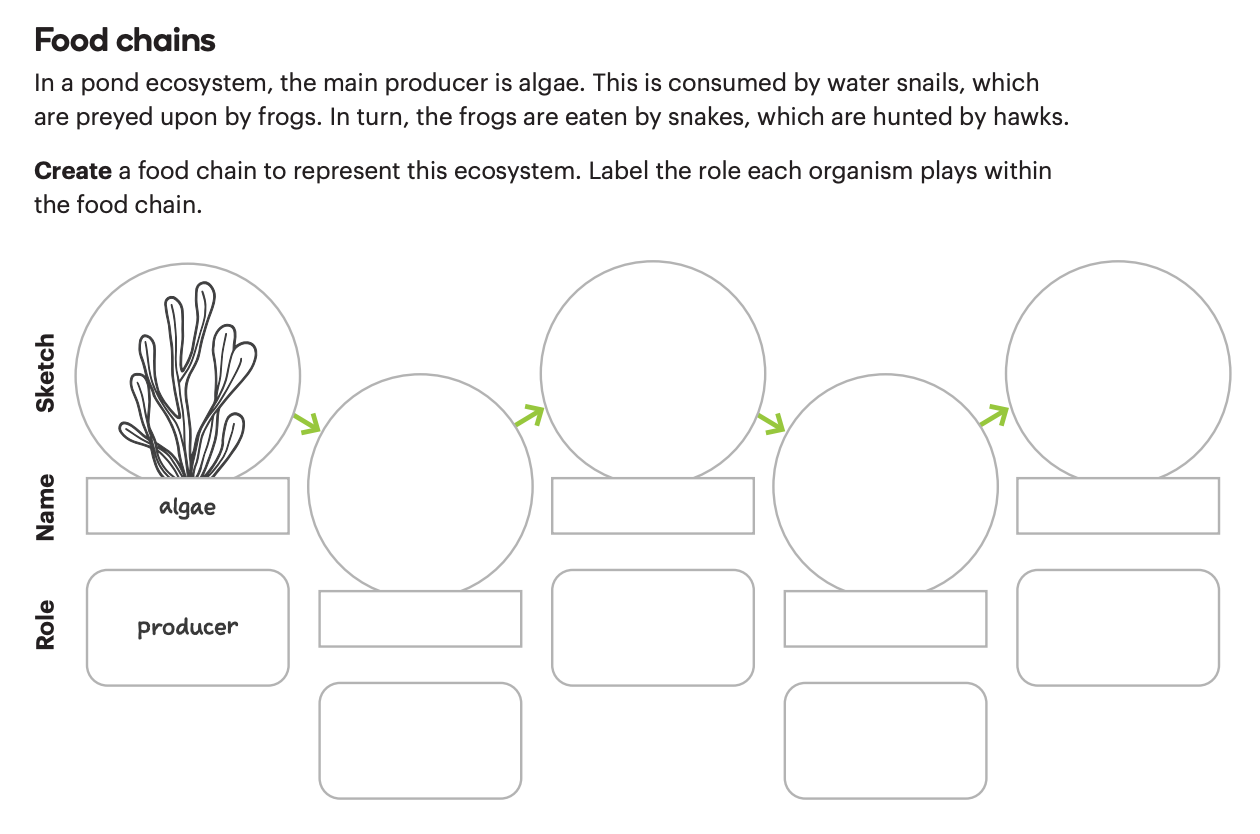
Venn diagrams
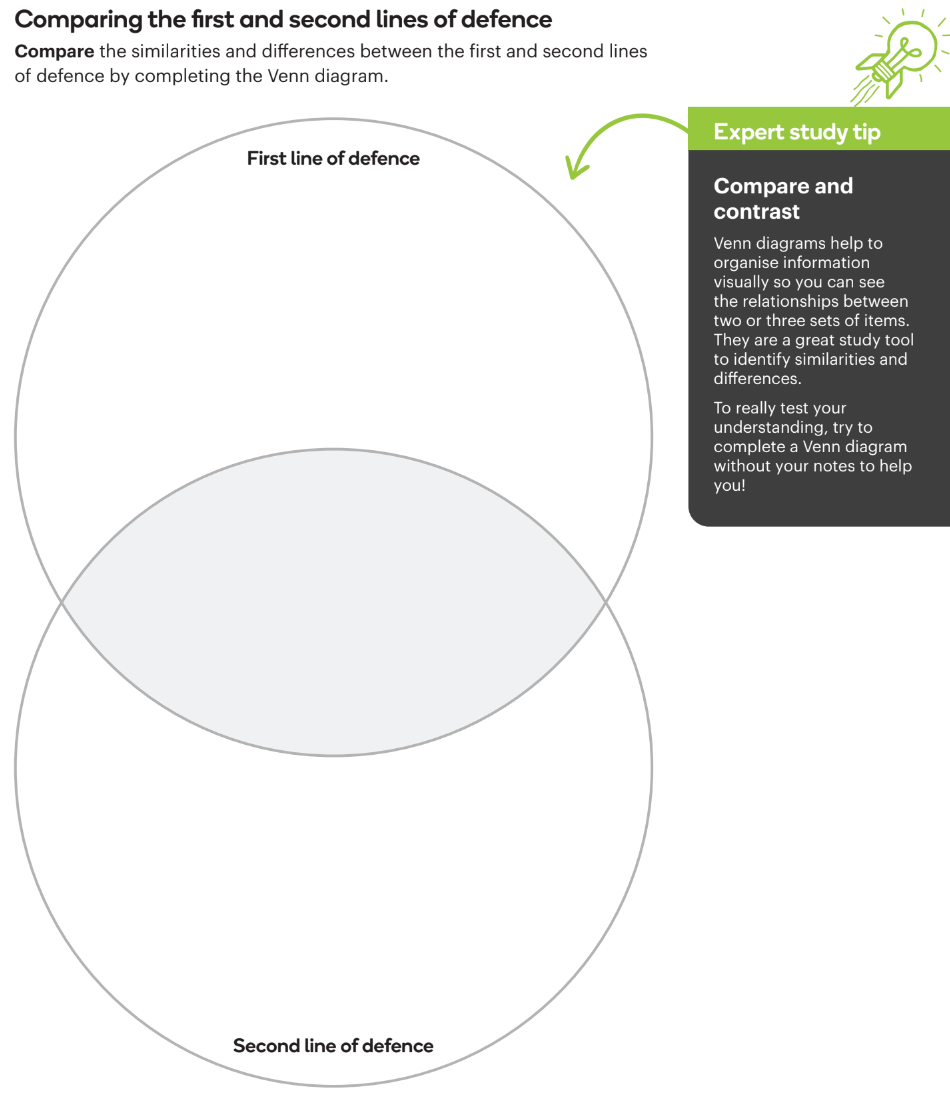
Frayer models
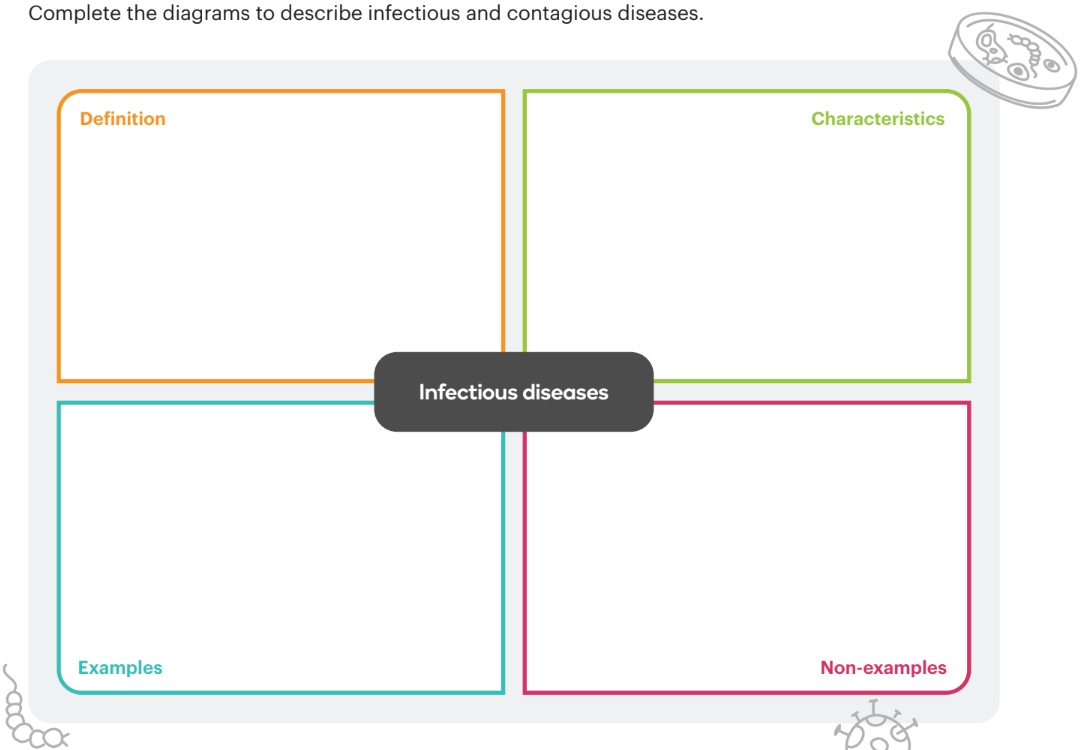
Students are taught how to use these strategies and tools effectively to help them learn, organise and retain key information.
Once students have completed the activities in the Revision Notes section, they'll have a concise summary of everything they need to know for each lesson.
Showing students how to study while they study
On top of expert study tips and note-taking, Stile's revision resources has a few other tricks to help your students revise.
- Glossaries: Stile's revision resources ask students to create their own definitions for keywords to help them master key vocabulary. The flashcards, quizzes and games on the dedicated Stile X phone app can help students fill in the blanks.
- Practice tests are the bread and butter of retrieval practice. Retrieval practice is a highly effective study technique that asks learners to recall knowledge from memory rather than re-reading. Students can then check their answers in Stile or on the Stile X phone app.
- Unit reflections are being introduced into every Stile unit and ask students to bring their knowledge together into a graphic organiser. In doing so, they connect ideas and boost recall.
Read the research!
- John Hattie’s research on Visible Learning
- Asking for help
- Stress is not always bad
Want to learn more about Stile's revision and mastery resources?
Read The Science of Stile's Revision Resources series here.

